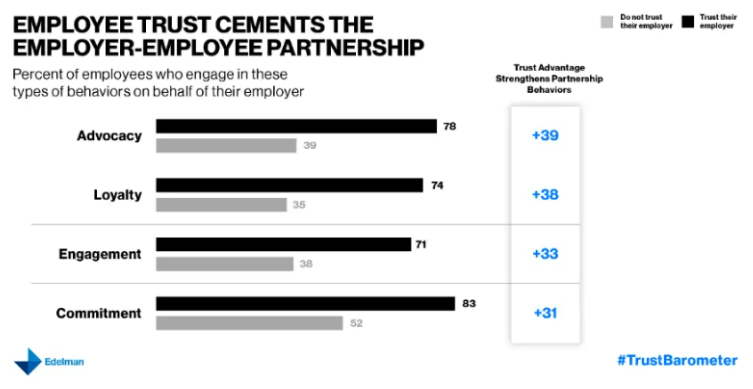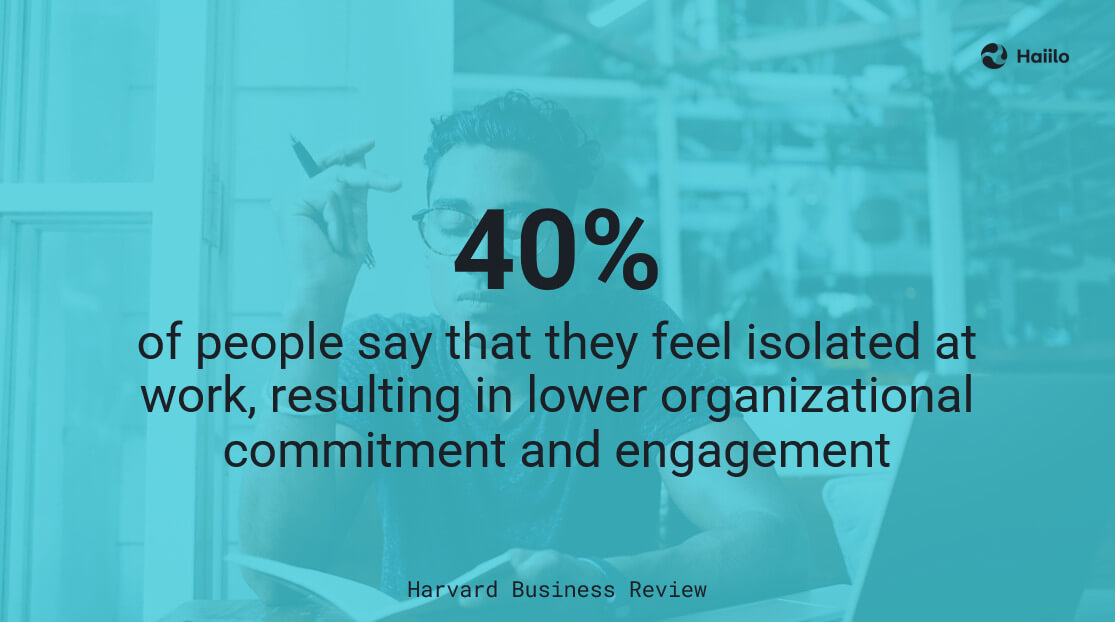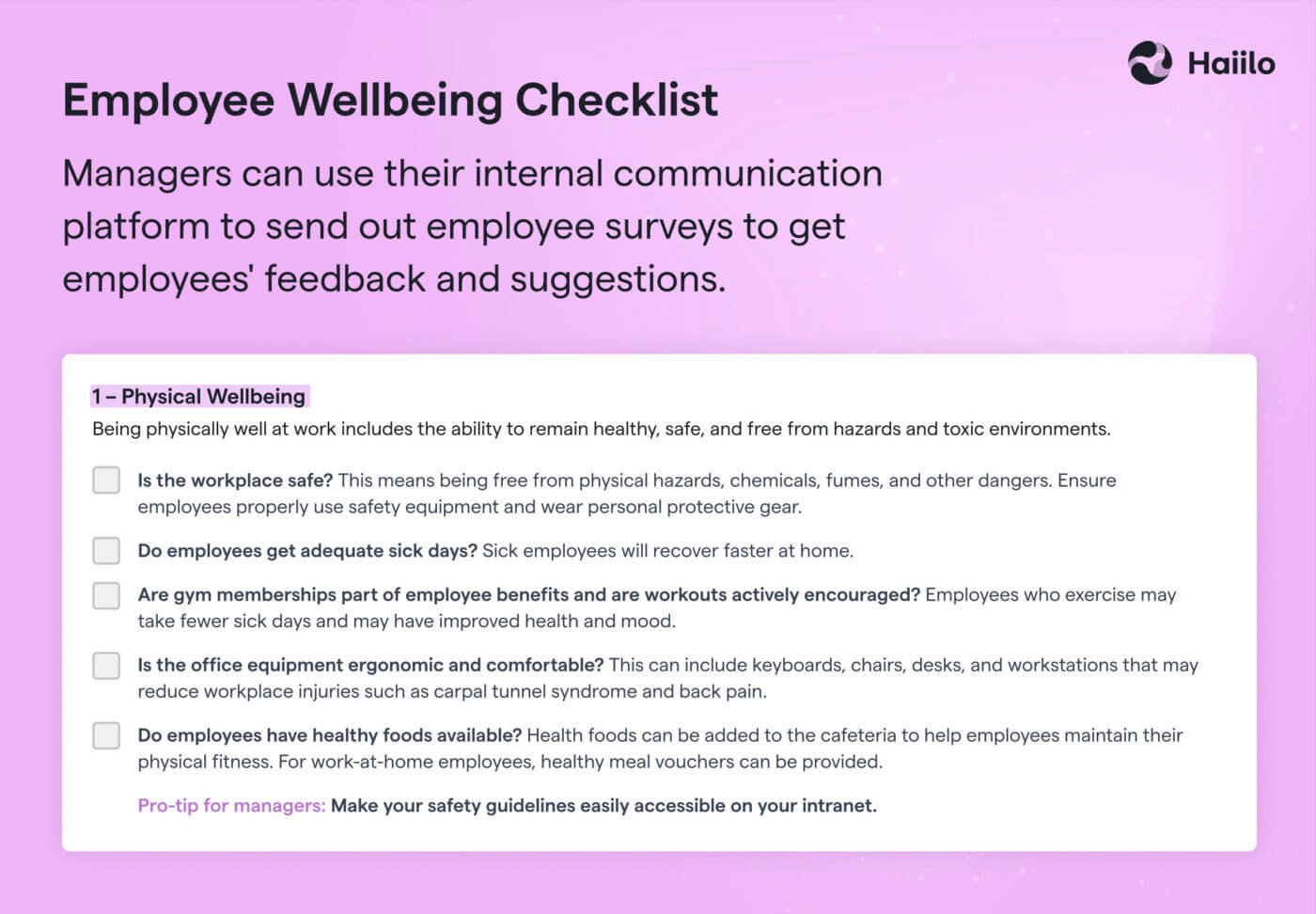Building strong relationships in the workplace can go a long way in shaping positive employee experience, driving higher engagement, and increasing employee retention.
According to Gallup research, 30% of employees say they have a best friend at work. That percentage of workers is reportedly seven times as likely to be engaged with their jobs and produce higher-quality work.
On the other hand, 40% of people say that they feel isolated at work, resulting in lower organizational commitment and engagement.
This is particularly present in remote and hybrid workplaces where employees don’t see each other in person and depend on technologies to communicate and collaborate at work.
So it is on employers to build positive workplace cultures, make strong bonds with their workers and enable workers to build strong bonds with each other.
Let’s look at the best ways to build strong relationships with employees in your organization.
- 1. Close Communication Gaps
- 2. Encourage Transparency to Build Trust In the Workplace
- 3. Listen Actively and Always Act On Feedback
- 4. Create Engaging Employee Communities
- 5. Build a Culture of Appreciation
- 6. Pay Special Attention to Employee Wellbeing
- 7. Implement DEI Best Practices
- 8. Pay Close Attention to Grapevine Communication
- 9. Encourage Advocacy and Brand Ambassadorship
1. Close Communication Gaps
Employee communications are critical for building strong workplace relationships. Since the emergence of the pandemic, internal communications and HR professionals have become important strategic business partners as they play an important role in keeping employees informed and engaged.
Still, many companies operate in silos where teams work independently, resulting in lower productivity. This is not surprising as 52% of employees don’t know what their company’s vision is, and 72% don’t fully understand their company’s strategy and what it takes to get there.
So IC and HR departments need to better communicate what their company stands for and encourage the entire workforce to work towards achieving one common goal. When this is achieved, employees naturally build strong bonds and are likelier to be happy at work.
Build stronger relationships with your workforce with Haiilo communications platform!
2. Encourage Transparency to Build Trust In the Workplace
Employers and leaders should always nurture transparency in the workplace because transparency is the best way to build trust with employees.
According to Edelman’s research, “employee trust cements employer-employee partnership” and directly impacts employee engagement, advocacy, loyalty, and commitment.

However, this same research showed that one in three people don’t trust their employer. Building relationships with employees becomes a mission impossible when there is no trust in the workplace.
So trust is the foundation of strong workplace relationships, and employers should always encourage and nurture workplace transparency by making it one of the main core company values.
3. Listen Actively and Always Act On Feedback
To build relationships with your employees, you need to show empathy. You need to prove to your employees that you care about their opinions, thoughts, concerns, and needs.
Not only will they appreciate you encouraging their share of voice, but you will also be able to learn more about their overall work experience and improve it based on feedback.
The best way to get your employees’ feedback and understand the pulse of your workforce is by sending regular employee surveys. Furthermore, employers should equip their managers with the necessary tools to measure their team’s pulse, prevent turnover, and identify possible quiet quitters.
Even though strong manager-employee relations can help reduce employee absenteeism and employee turnover, the opposite is also true. In fact, a GoodHire survey found that 82% of workers would quit a job because of a bad manager.
4. Create Engaging Employee Communities
As recently defined in our blog, an employee community is:
“a virtual social-media-like place where employees come together to connect, communicate, and collaborate with each other. It serves as a single hub for employees to access information, share knowledge, ask questions, provide feedback, find documents, and collaborate with peers. It streamlines internal communications, strengthens employee relationships, and provides quick access to the needed resources. Simply put, employee community is a digital home for your workforce.”
Investing in creating healthy employee communities where employees can connect and collaborate with each other is a prerequisite for building strong peer relationships and improving other people-related KPIs.

According to a study conducted by Workforce, 62% of employees who had 1 to 5 close friends at work said they would reject another job offer. That number increases to 70% for employees who have 6 to 25 close work friends.
💡 Learn all about creating engaging employee communities in your workplace!
5. Build a Culture of Appreciation
Saying “thanks” and “kudos” is a good way to boost employee morale and strengthen coworkers’ bonds.
So building and nurturing a culture of appreciation is a must for every organization. You can implement many different types of employee recognition programs, but it is ok to start just with a simple non-monetary program. In fact, according to a study by the Incentive Research Federation for the Incentive Marketing Association, 65% of employees prefer non-monetary incentives instead of monetary rewards.
Knowing that, it is quite shocking that only 23% of employees strongly agree they get the right amount of recognition for their work.
To build a culture of recognition, employers must regularly talk about it, encourage it, present its benefits, and share the best practices for showing acts of gratitude.
6. Pay Special Attention to Employee Wellbeing
When employee well-being is good, it is likely that they will form stronger workplace relationships. So employers need to pay special attention to their employee well-being and ensure they have a healthy work-life balance.
During the past couple of years, many employers have started implementing employee well-being programs focusing on employees’ mental health.
According to the American Psychological Association’s Work and Well-Being Survey,
“More than a third of working Americans (35%) reported experiencing chronic work stress, and less than half said their employer provides sufficient resources to help employees manage their stress.”
Moreover, a recent study shows that 69% of workers claimed this was the most stressful time of their entire professional career.

So most employees today appreciate their employers’ well-being initiatives, and they agree that they have a good impact on their personal and private lives.
7. Implement DEI Best Practices
Diversity, equity, and inclusion can also help build stronger employee relationships. According to research, 76% of job seekers consider workplace diversity an important factor when considering employment opportunities, and about 1 in 3 job seekers would not apply for a job in a company that lacks diversity in its workforce.
When diversity in the workplace is encouraged, cultural differences don’t matter. Consequently, employees from around the world are more likely to form strong bonds regardless of the differences.
Similarly, when employees feel included and empowered, they have a stronger feeling of belongingness and are more likely to have strong connections and relationships with their employers.
Furthermore, fairness and equity are critical for boosting employee morale and work satisfaction. So employers that pay close attention to workplace equity are also more likely to enjoy a healthy workplace culture.
8. Pay Close Attention to Grapevine Communication
The American Management Association estimates that 70% of all organizational communication emanates through the grapevine.
The main danger of grapevine communication in the workplace is that much of the information spreaded through the grapevine needs to be verified. Often, such information is difficult to track. So employers need to understand that when false and unverified information is spread through the grapevine, people’s reputations, careers, and lives can be harmed very rapidly. Consequently, workplace peer relationships can be affected.
Leadership communications can play a big role in eliminating grapevine communication. The AMA uncovered some conflicting findings on the role of grapevine communication in an organization. For example, when asked if employees would place “more credence in a speech from a company leader or in a message heard over the grapevine,” 47% of respondents chose the grapevine.
📹 Grapevine communication can be considered as one of the communication barriers in the workplace. Check out our Masterclass about how to overcome the biggest barriers.
9. Encourage Advocacy and Brand Ambassadorship
Employee advocacy is a powerful tool for driving brand awareness, increasing sales, and attracting high-quality job candidates.
Many employers are unaware of their employees’ willingness to be their brand ambassadors. By encouraging employee advocacy, companies can show their workforce that they trust them and appreciate their citizenship behaviors. Consequently, they are more likely to form and nurture stronger bonds and healthy employee relationships. Furthermore, they are much less likely to be quiet quitters.
If your employees engage in ambassadorship activities, make sure that you recognize and reward their efforts. Many organizations that understand the actual value of employee advocacy have already implemented formal employee advocacy programs where employees get recognized for their actions.










